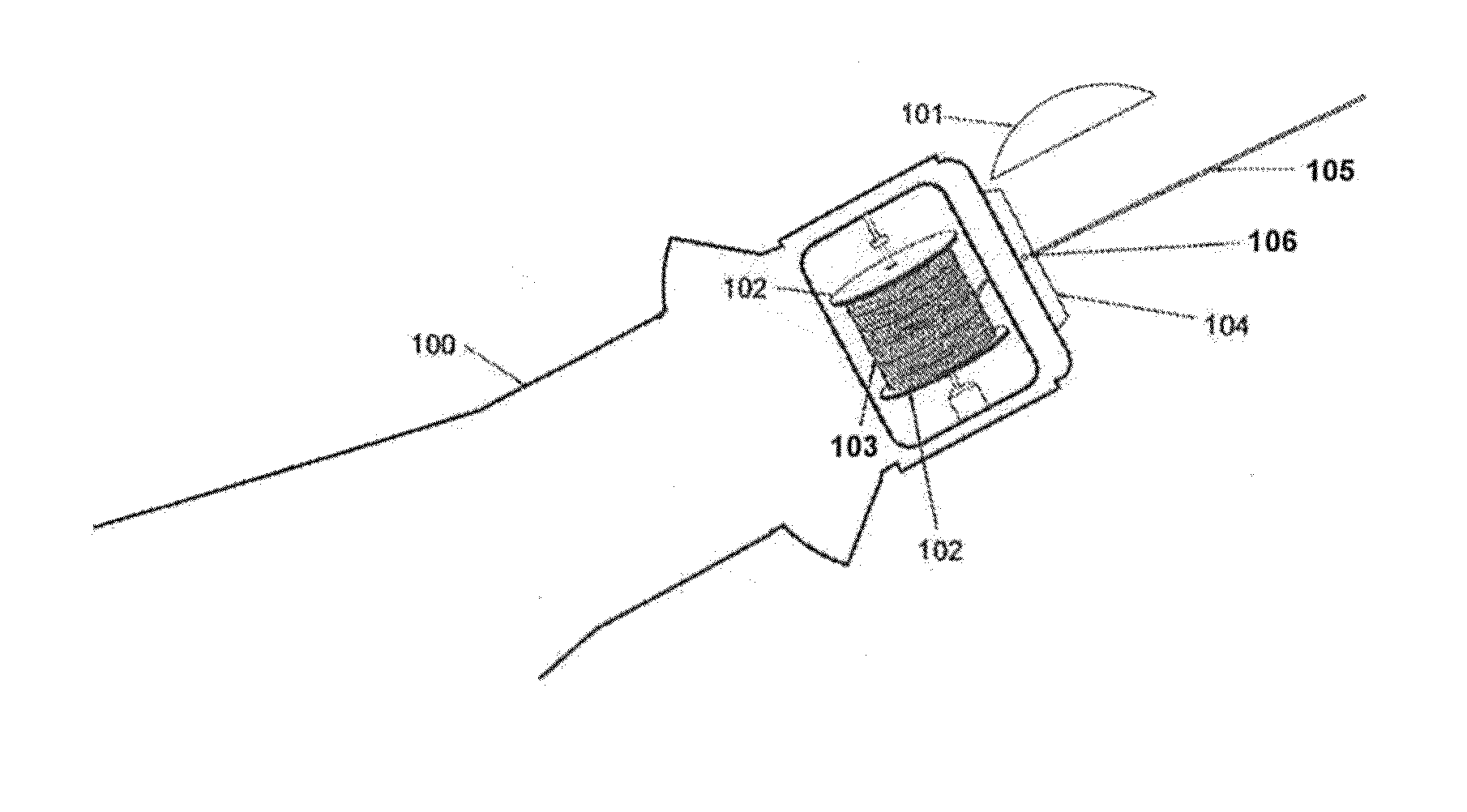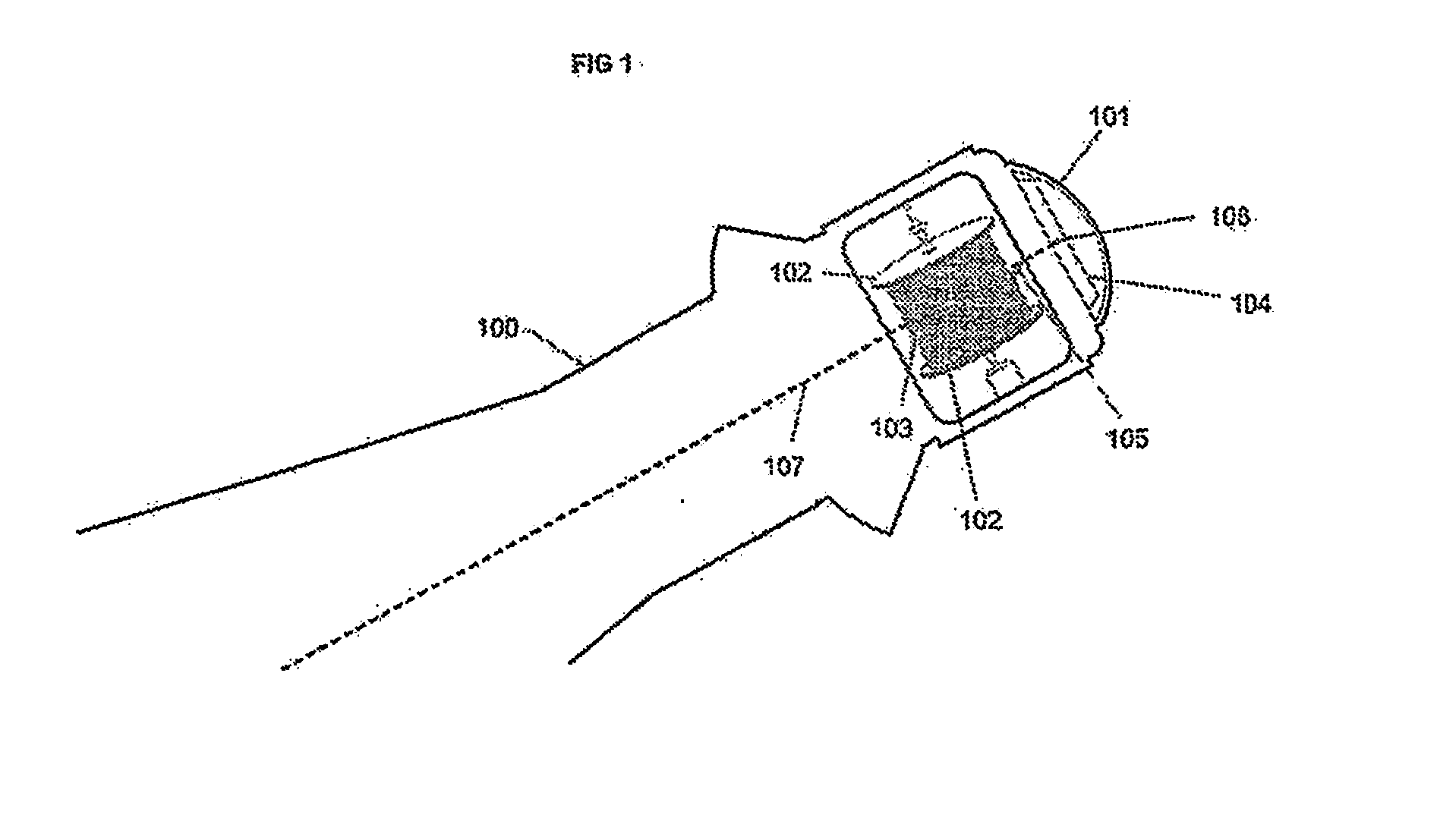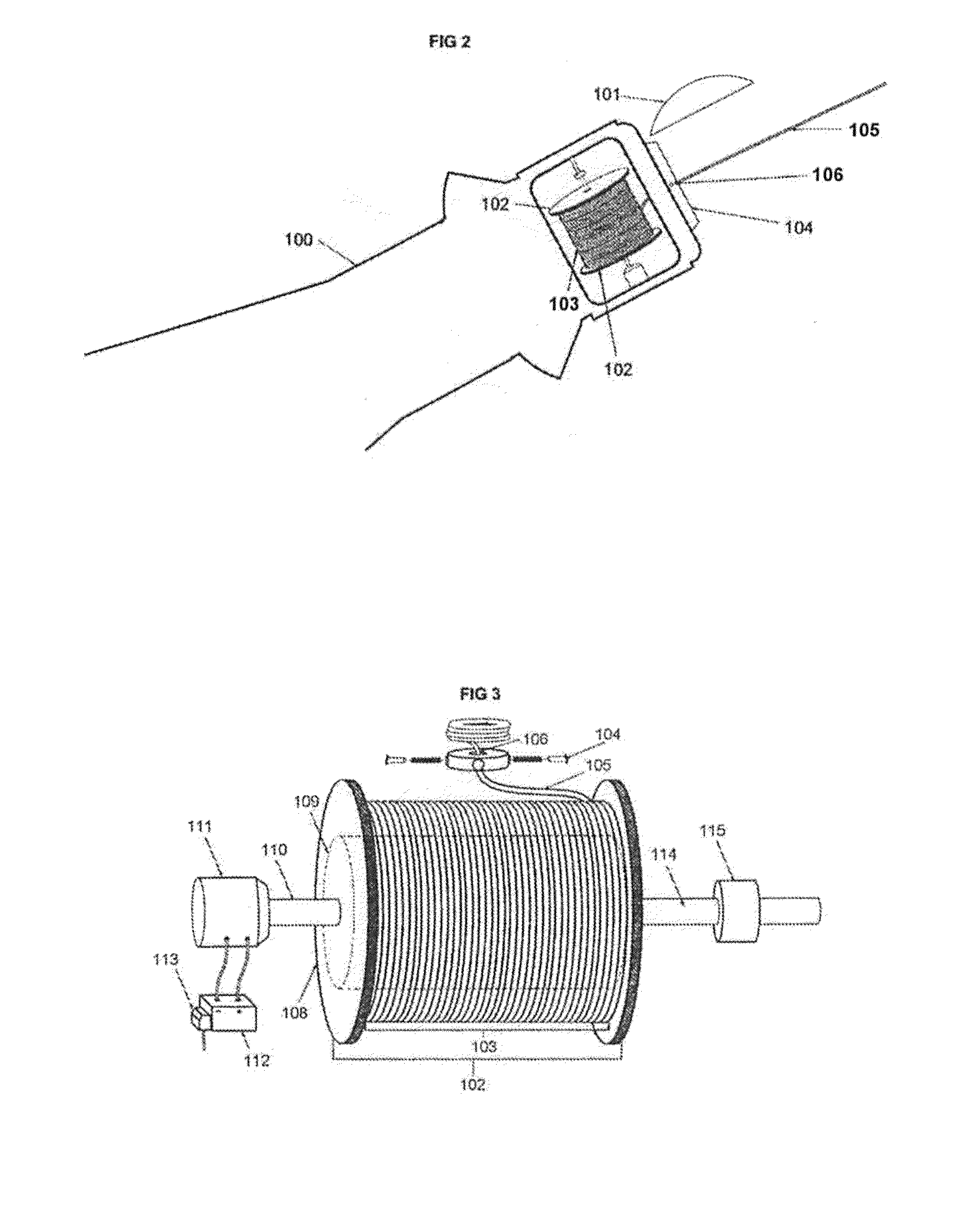Tether for spacecraft reaction control system
- Summary
- Abstract
- Description
- Claims
- Application Information
AI Technical Summary
Benefits of technology
Problems solved by technology
Method used
Image
Examples
Embodiment Construction
[0137]In the following description, for purposes of explanation, numerous specific details are set forth in order to provide a thorough understanding of the present invention. It will be apparent, however, that the present invention may be practiced without these specific details. In other instances, well-known structures and devices are shown in block diagram form to avoid unnecessarily obscuring the present invention.
[0138]FIG. 1 illustrates a cut-away side-view of a forward section of a space capsule 100 prior to the re-entry phase, showing a tether-based RCS system comprising a control apparatus 104 and a reel 102 for holding a length of tether 103, in accordance with an embodiment. Prior to re-entry, the opening at the end of the forward section of the capsule is covered by a lid 101 for keeping an initial length of unreeled tether 105 confined within the capsule. The unreeled tether 105 is the portion of tether held by the reel 102 that is threaded through a “center hole”106 o...
PUM
 Login to View More
Login to View More Abstract
Description
Claims
Application Information
 Login to View More
Login to View More - R&D
- Intellectual Property
- Life Sciences
- Materials
- Tech Scout
- Unparalleled Data Quality
- Higher Quality Content
- 60% Fewer Hallucinations
Browse by: Latest US Patents, China's latest patents, Technical Efficacy Thesaurus, Application Domain, Technology Topic, Popular Technical Reports.
© 2025 PatSnap. All rights reserved.Legal|Privacy policy|Modern Slavery Act Transparency Statement|Sitemap|About US| Contact US: help@patsnap.com



